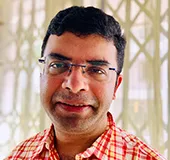The developments in the wake of the
20th Party Congress of the Communist Party of China (CPC), China’s rise, its domestic debates and agenda merit a closer examination of
the People’s Liberation Army’s (PLA) role as a geopolitical actor.
Chinese President Xi Jinping, who made history with his
unprecedented third term in office at the Party Congress in October, told the Chinese elite at the quinquennial gathering that
it was important to further expedite military modernisation to make it a world-class force. He underscored that the PLA should be able to stage military operations quickly and have the “ability to win local wars”. On the issue of Taiwan’s reunification, Mr. Xi asserted that while China would make efforts to bring back the territory peacefully, it could deploy military means to achieve its aims. Furthermore, Mr. Xi proclaimed that he would ensure “total reunification of China”. More recently, he told United States President Joe Biden (during their first in-person meeting at the sidelines of the G20 leaders’ summit in Indonesia) that Taiwan was the core of China’s core interests. Having cranked up the rhetoric, Mr. Xi will have to deliver on Taiwan. In this endeavour, the PLA will be an important component.
China made forays into building capacities so as to fight on new battlefronts such as space and cyberspace with the constitution of the Strategic Support Force.
Strategic shift
This year, Mr. Xi completes a decade at the helm of the Central Military Commission (CMC), a body that oversees the CPC’s vast military. In different phases, he has brought about changes to the CMC’s structure and troop units and reconstituted command theatres. Its naval fleet is larger than America’s, and has improved the capabilities of its navy personnel through participation in anti-piracy missions. China made forays into building capacities so as to fight on new battlefronts such as space and cyberspace with the constitution of the Strategic Support Force. The PLA Rocket Force, which was upgraded to a full military service branch in 2016, is in charge of China’s land-based nuclear and conventional missile forces. There has been a change in approach to military education and hiring talent with the PLA, increasingly seeking out university students with a background in “skills needed to supplement war effort” namely engineering, communications, Internet, and drone operations. Reports also emerged that China was engaging air force pilots of western nations to train its personnel by offering them huge sums of money so as to understand how foreign defence services operate and fine-tune Chinese air force capabilities. The tactics learnt through such means could come in handy in case of an invasion of Taiwan.
According to defence experts, Mr. Xi’s reforms, in which the land-based army has been pruned in favour of improving aerial, naval and strategic service branches, constitute the largest overhaul of the PLA since the 1990s in a bid to mould the military into a modern force. The motivation for this military transformation may have something to do with Mr. Xi’s background. Around the time of the Sino-Vietnamese war, Mr. Xi served as then Defence Minister Geng Biao’s secretary in the CMC, allowing him to witness at close quarters the PLA’s shortcomings and deficiencies.
Ambitions post Party Congress
China’s military overhaul is also connected to its ambition to elbow out the U.S. as a global power. Thus, attaining dominance in the air, space and cyber domains, allows China to project power in the region and protect its interests overseas. In this mission, it is borrowing from the western template. The ascendance of the U.S. as a world power in the 1940s and the geopolitics of West Asia where America’s rival, the Soviet Union, began to take interest led to an increased U.S. army presence in hydrocarbon-rich Saudi Arabia. China is similarly broadening its ties to archipelago nations in the southern Pacific Ocean such as the Solomon Islands for geopolitical reasons. A Europe thrown into turmoil due to the war in Ukraine has meant that China sees it prudent to expand into the Solomon Islands for its Belt and Road Initiative and constructing special economic zones. An economic investment fetching good returns is incumbent on political stability, in addition to other variables. This seems to be the reasoning for the security pact recently inked between China and the Solomon Islands. Picture this — on the pretext of protecting Chinese projects and personnel stationed on the islands, China’s police-military personnel get a toehold on the islands. China then makes inroads into the islands’ security establishment by indoctrinating law-enforcement officials through training programmes conducted on the mainland, and socialises its political elite through bribery and corruption before taking over. This is not a dystopian fantasy, but a reality that is unfolding right now.
An economic investment fetching good returns is incumbent on political stability, in addition to other variables.
Implications for India
As China’s military reforms have rolled out, there has been a commensurate increase in its aggression and expansion as evidenced in phases such as the declaration of an Air Defence Identification Zone over the East China Sea, reclamation of islands in the South China Sea, followed by construction of military infrastructure there. Even as China seeks to dial down tensions along the border and create an impression of bonhomie, it is building infrastructure along the Indian border. New Delhi must not get lulled into complacency by these optics or Chinese sophistry. The first stop in China’s journey to become a global power is becoming a regional hegemon in Asia. This will mean that it will have to deal with India soon or later.
This commentary originally appeared in The Hindu.
The views expressed above belong to the author(s). ORF research and analyses now available on Telegram! Click here to access our curated content — blogs, longforms and interviews.




 PREV
PREV



